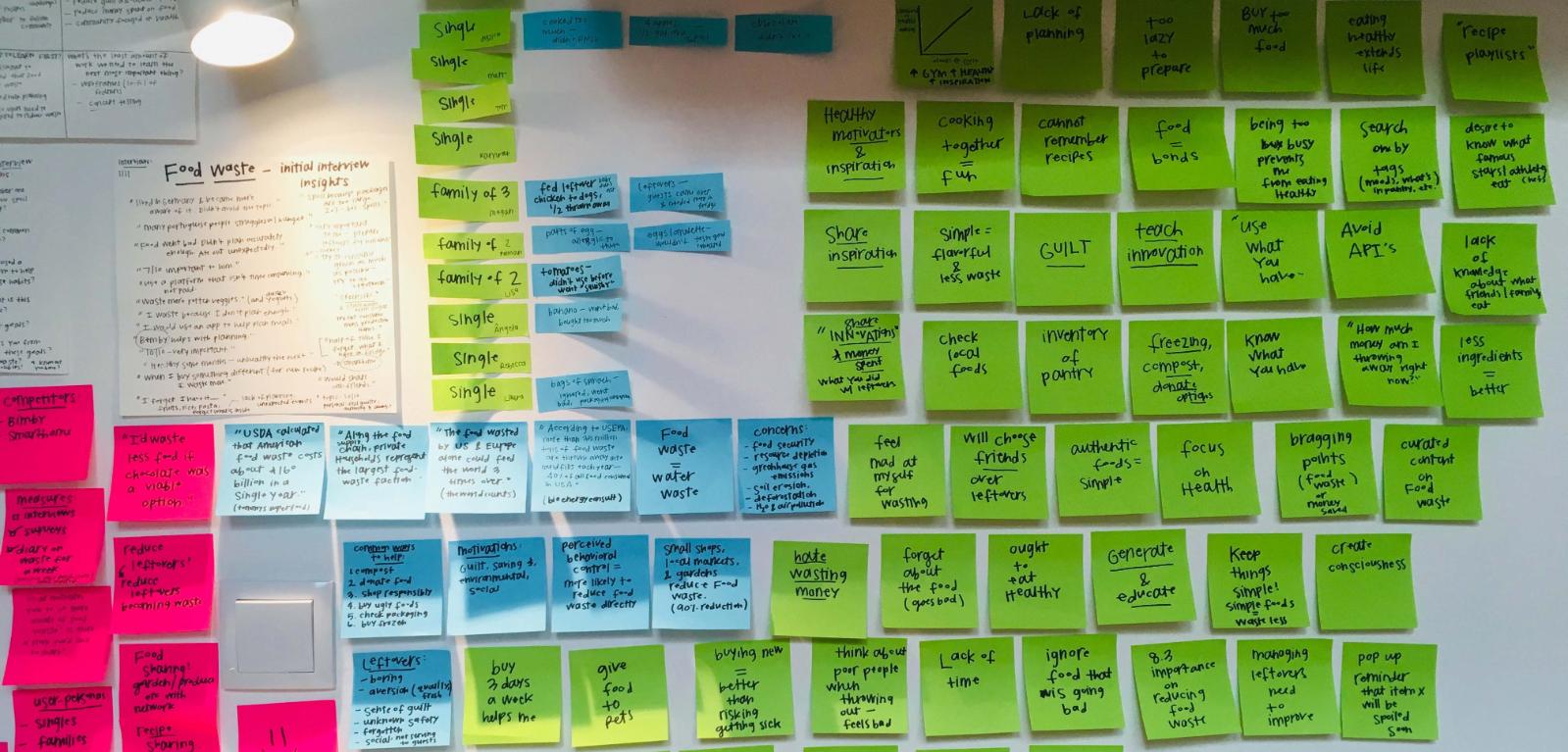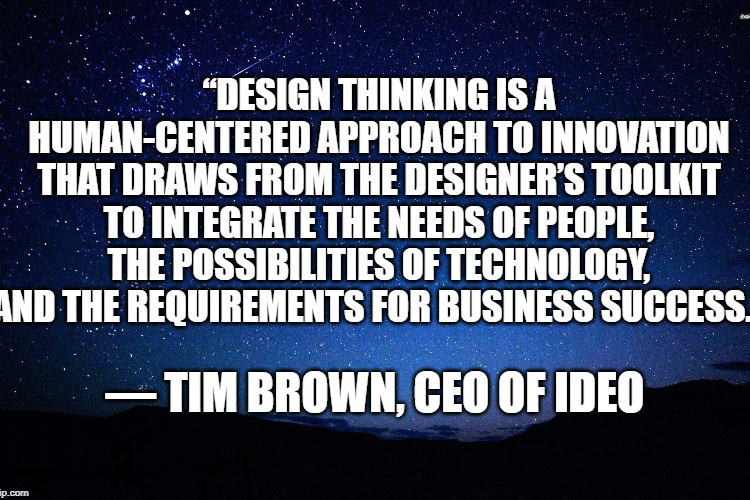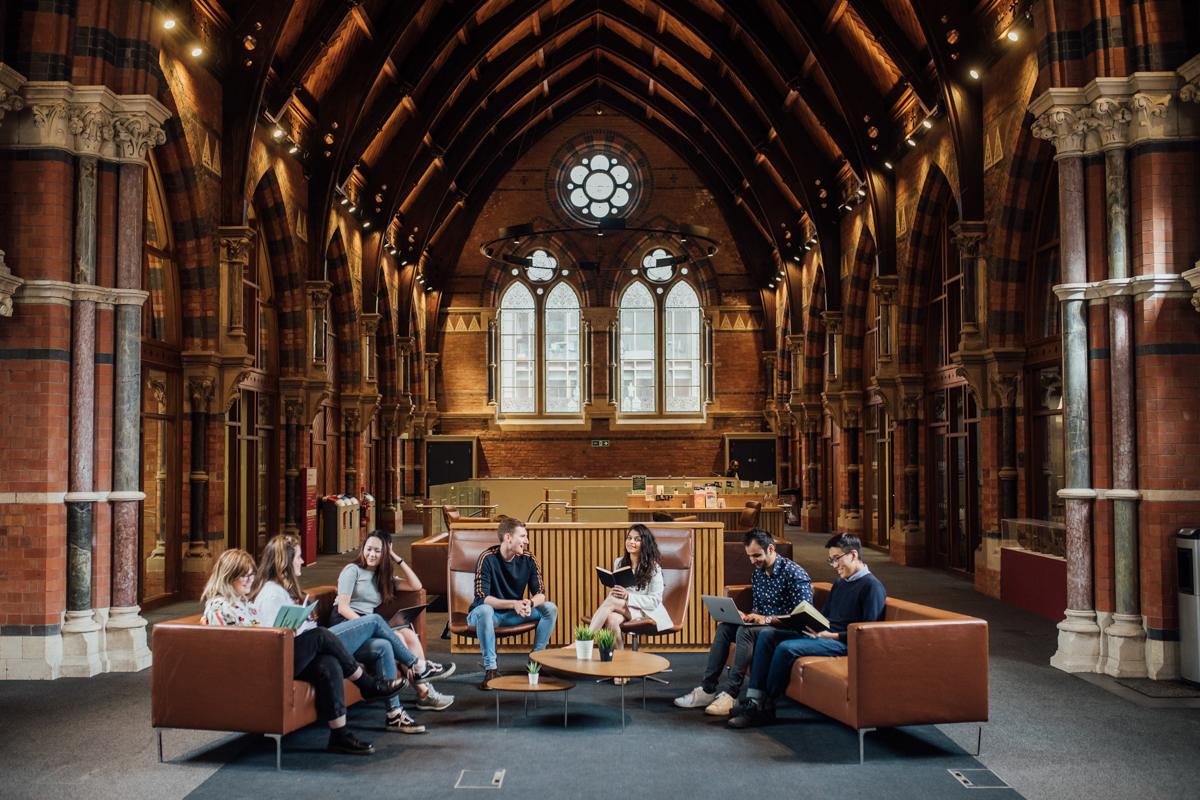How Design Thinking Can Improve Your Mental Health
The human-centred approach to innovation is defining the business zeitgeist, but what is it and how can you use it as a roadmap to personal fulfilment? Queen’s MBA student Jessica Gambrill explains how she did it.

Everyone should learn how to use design thinking. It's not just useful for creating a winning business model; it's a proven mindset that can guide you through some of life's toughest challenges. And designers and tech companies aren't the only ones who can harness its value. So can you. Here’s how.

Design thinking applied to solving life’s problems
Is there a problem in your life worth solving? Maybe you just moved to a new country, and the separation from friends and family back home is taking a toll on your mental health? This might result in a design challenge to manifest new relationships.
For me, as a graduate student, long hours spent studying and researching results in less sleep, poorer nutrition, and an added mental strain from all the new information I’m analysing. In this case, the design challenge is how to stay healthy while completing my post-graduate studies.
It’s an ongoing process
It's important to understand that unlike many self-help books or workshops, which are step-by-step, the design process is iterative and not linear. This means you may find yourself bouncing back to the ‘Ideate' phase or the ‘Define' phase again, in order to come up with new ideas when the test doesn't go as planned. So be gentle and patient with yourself, and don't forget that your behaviour is under your control, and so is changing yourself; you might just need a new way of thinking… Design thinking.

The five phases of Design Thinking
There are five phases to explore, which will hopefully become more valuable and accessible if I explain them using the example of a design problem around mental health. One of the best parts of using design thinking for your own life is that you can implement each stage immediately.
1. Empathise (Self-Empathy)
As much as you might jump around from phase to phase later, it's essential to always start here. Most people will incorrectly assume they are already empathising with themselves because they acknowledge they are not happy with their current situation. But it's crucial here to truly understand why you are feeling the way you are feeling.
How I did it:
I like to collect data on myself through tracking. This data can come from a variety of sources, from calendars, to my song history on Spotify, to the data on my health app. I feel like this data helps me to predict outcomes better. To collect data on my emotional well-being, I use journaling. I can go back and read how I was feeling in a moment of crisis and better understand myself. There was a downward trend a few years ago when I was feeling depressed and down on myself. I felt isolated and lacked the support I needed after a bad breakup.
How you can do it:
While I highly recommend starting a journal for any design life challenge you are tackling, I also understand that's not for everyone. There are apps available for almost any type of tracking, whether it be for food logging, emotions logging, or generic trackers where you customise them to count whatever you want. Somehow, someway, collect your data to avoid making an emotional observation, and save yourself time in the long run.
2. Define
Now that you have all the data, you understand how you got here. By completing the Empathise phase, you get the structural insights you need to define your needs.
How I did it:
Since most of my data is digital, I have the benefit of algorithms in the app doing some of the work for me. By using filters and evaluating the data over time, I can pinpoint my needs. During this difficult time a few years ago, I had a need for the support of those close to me; a need for making priorities, and a need to find ways to celebrate success.
How you can do it:
Using your apps or your journals, you look for recurring themes or trends. Perhaps you notice that you are in your worst moods on Tuesdays and determine it's because you don't sleep very well on Monday nights because you stay up late after class watching television. It's clear, you need your sleep. Now you can prepare for the next phase of Ideation using "How I might..." statements. For example, "How might I get better rest on Monday nights?"
3. Ideate
By this point, things are getting seriously exciting. You likely feel a lot of clarity around what you can do to get away from this challenge you have been facing for a long time: the perfect time to harness that energy into a brainstorm. Remember, anything goes, and nothing is a bad idea.
How I did it:
For me, I love to visualise, so I begin building a wall of sticky notes with an initial timer. But then (and this is tricky for most people), I walk away. I give myself some time and space away from the problems I've defined and carry on with the rest of my life.
What I experience is nothing short of a phenomenon. Throughout the rest of the day, I have other ideas that percolate in my brain, and I add them to the wall. Many times, theses ideas created during the incubation period are my best ones. Some examples included:
- Completing one act of self-care a day
- Writing a blog post every day that puts my feelings out in the world
- Look into therapy
- Have a date night with me
How you can do it:
Whatever way is the best way for you to brainstorm ideas is the best way to brainstorm ideas. Experiment with another way if what you're doing isn't working. Invite others to help you; they might offer some sage ideas. If you worry that you'll have an idea and forget it, carry around a small notebook with you, or keep a folder in your Notes app dedicated to ideation.
4. Prototype
Remember, this is still your idea in a rough draft. Your prototype does not have to be elaborate or impress anyone. It's not perfect. The only requirements are that it's something that takes on a form that allows you to interact with it. A failed prototype is not a waste of time because it adds valuable insight into what doesn't work.
How I did it:
I started with one idea and added others so that if one was not working, I could eliminate it from my routine without leaving me with nothing to fall back on. I began by taking selfies and sharing them on social media along with a reveal of my experiment. Many people were supportive and offered words of encouragement. Then, I added an act of self-care each day before going to bed — something like yoga, a facial mask, a massage, or anything else that made me feel good.
How you can do it:
Just do it. There's no better advice I can offer. Likely, you will either see results right away, or you won't see them at all, so if an idea’s not working, move on to the next. You might also examine ways to tweak your prototype slightly to accommodate your needs better. Don't forget, if nothing you're trying is working, it's okay to go back to the Ideate or even the Design phase to re-evaluate.
5. Testing
A lot of people have a hard time understanding the difference between Testing and Prototyping. Think of the Prototyping as an experiment and the Testing as asking yourself if this solution is sustainable. And it's still okay to go back to any of the earlier phases if you are having trouble finding a way to answer your needs.
How I did it:

My plan to start with one idea and add others worked well. Eventually, I was filling up my day with self-love and validation and started to feel more in control of my emotional well-being. Some things began to feel burdensome, and so I eliminated them, knowing I had plenty of other things that would keep me positive.
How you can do it:
At this phase, you feel pretty good about your prototype, and now you can refine it to make it work for you. Don't feel the need to be married to it. If your situation changes and it no longer works, bring it back to the previous stages again. It might be that you replaced watching television after class with yoga to help you decompress before bed time and it worked - until it didn't.
Go back and explore your Ideation phase to see what other solutions might fit your life now rather than beat up on yourself for not being able to stick to doing yoga every Monday. This is something I love about design thinking, there is no failure without purpose.

I am continuously experimenting with ways to try and figure out how to better my life. By using design thinking, I make educated decisions rather than random guesses or relying on fate. It's a way to be more purposeful in designing the person you want to be and the life you want to experience. Are you ready to start by empathising with yourself?
If you found this interesting, you can discover Design Thinking in action at The Graduate School.
